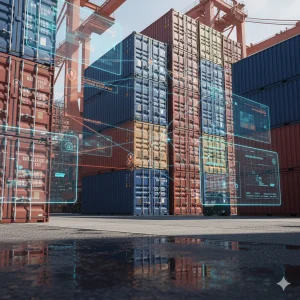In today’s compliance environment, speed is no longer a luxury; it’s a requirement. The ability to detect, flag, and act on a sanctions risk in real-time can be the difference between proactive protection and regulatory exposure. And in high-risk sectors, such as cross-border payments, remittances, digital banking, crypto, or trade finance, that window is shrinking by the day.
Sanctions aren’t static, and neither are the risks tied to them. The geopolitical landscape is volatile, enforcement is rising, and regulatory expectations are moving beyond routine checks to real-time vigilance. In this environment, relying on outdated lists or manual refresh cycles is no longer acceptable.
Real-time sanctions screening isn’t “nice to have”; it’s non-negotiable.
The Risk of Operating on Outdated Sanctions Data
Most financial institutions understand the importance of sanctions screening. But not all understand just how frequently sanctions lists are updated, or how fast an oversight can turn into a compliance breach.
In 2023 alone, global authorities issued more than 1,200 sanctions list updates across jurisdictions, including OFAC (US), EU, UN, HMT (UK), and SECO (Switzerland). These updates often reflect sudden geopolitical events, armed conflict, financial crime exposure, cyberattacks, and other fast-moving risks.
What happens when these updates aren’t picked up immediately?
- A recently sanctioned individual could be onboarded or allowed to transact
- A previously approved entity could trigger a false sense of compliance security
- Downstream systems might miss crucial escalation triggers
Outdated data introduces hidden liabilities, and in high-risk markets, the consequences can escalate rapidly.
Compliance Expectations Have Evolved
Regulators around the world no longer accept weekly list checks or periodic batch processing as sufficient.
The bar has just been raised, and compliance teams are expected to demonstrate that they’re not just screening, but doing so continuously and accurately.
Most expectations include:
- Real-time identification of changes in sanctions status
- Ongoing monitoring throughout the customer lifecycle, not just at onboarding
- Documented escalation paths and response times
- Proof of audit-readiness, including logs and resolution actions
In jurisdictions like the U.S, U.K., and EU, regulators are increasingly asking, “How quickly do you detect list changes, and what happens next?”
In high-risk verticals, the expectation isn’t theoretical; it’s baked into compliance audits, vendor assessments, and enforcement action reviews.
Sanctions Complexity is at an All-Time High
The challenge isn’t just volume, it’s interpretation and linkage. Sanctions today extend far beyond the classic ‘individual or entity’ structure.
Many lists now also include:
- Aliases and native-language script variations
- Cryptographic identifiers (e.g., wallet addresses)
- Secondary and indirect exposure risks
- Thematic designations like ransomware actors, environmental offenders, and cyber threat actors
This means matching names isn’t enough. Screening systems need to understand:
- Relationships between individuals and legal entities
- Jurisdictional relevance of specific list items
- Contextual factors such as industry, geography, and exposure risk
In short, your screening engine must move from “checking names” to interpreting networks. And that’s only possible when data is both current and intelligently structured.
Need Real Infrastructure
It’s not enough to say, “We do real-time updates”. The infrastructure behind that claim makes all the difference. Many tools claim to refresh frequently, but without the automation, normalization, or resolution layers to make the data usable.
True real-time sanctions readiness requires:
- Live API integration with local and global sanctions issuers
- Automated de-duplication and name disambiguation.
- Continuous background screening
- Context-aware match scoring to reduce false positives without missing critical risks
- Workflow integration—so alerts don’t sit idle, but route immediately to the right teams
If any one of these components is missing, the process breaks. And in high-risk markets, breakpoints = exposure.
The Cost of Delay Isn’t Just Regulatory
Yes, sanctions enforcement fines are real, and they’re growing. But delays in updating sanctions data can have cascading costs across operations, reputation, and even customer experience.
Operational risks include:
- Suspended or blocked payments due to retroactive list hits
- Manual re-screening efforts and workload spikes
- Alert backlogs that paralyze onboarding and transaction flows
Reputational risks include:
- Public association with sanctioned individuals/entities
- Regulatory questioning during audits
- Customer and investor trust erosion
Financial costs include:
- Missed SLAs
- Penalties for non-compliance
- Opportunity costs from slowed growth and reduced customer throughput
In short, every delay costs something—whether that’s time, trust, or capital.
How IDYC360 Solves for Real-Time Sanctions Readiness
IDYC360 is purpose-built for the speed, scale, and precision that today’s compliance teams require, especially in volatile markets. Our sanctions solution combines real-time data ingestion with intelligent automation and contextual decision-making.
Key differentiators include:
- Always-on sync with
- 1,300+ global, regional, and thematic watchlists
- Ongoing monitoring of customers, not just one-time screening
- AI-driven entity resolution that accounts for aliases, misspellings, and structure
- Custom match scoring & escalation thresholds to reduce alert fatigue
- Audit-ready trail with full version tracking of sanctions changes
- API-first deployment for seamless integration into existing onboarding, KYC, or transaction flows
The Bottom Line
In today’s environment, sanctions risk is a real-time risk.
Compliance teams that rely on static, outdated databases or delayed updates aren’t just falling behind—they’re putting their institutions at risk.
High-risk markets demand high-speed awareness. That means modernizing your sanctions process with infrastructure that can handle volume, context, and velocity, without compromise.
Ready to Stay
Compliant—Without Slowing Down?
Move at crypto speed without losing sight of your regulatory obligations.
With IDYC360, you can scale securely, onboard instantly, and monitor risk in real time—without the friction.











